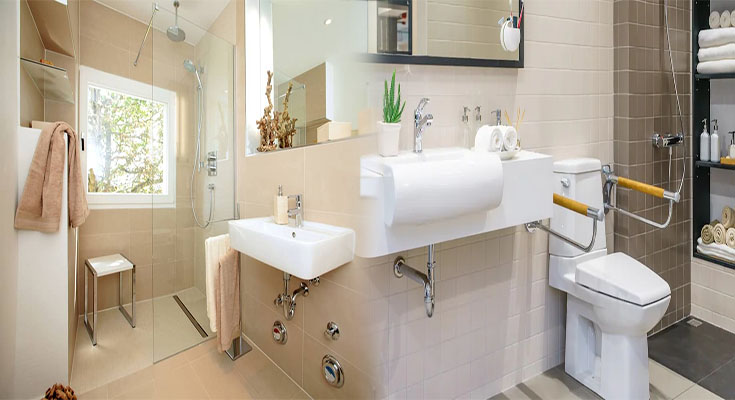As we age or face physical challenges, it becomes crucial to ensure that our homes are safe and accessible. One area that requires special attention is the bathroom. The bathroom can be a hazardous space for seniors and people with disabilities, but with a few modifications, it can become a safe and comfortable environment. In this article, we will discuss some essential tips for accessible bathroom remodeling.
1. Install Grab Bars
The installation of grab bars is one of the first steps towards making a bathroom more accessible. Grab bars provide much-needed support and stability, allowing users to safely move around and avoid falls. Place grab bars near the toilet, shower, and bathtub areas. Make sure they are securely anchored to the wall and designed to bear weight.
2. Non-Slip Flooring
Slippery floors can be dangerous for anyone, especially for seniors and people with disabilities. To prevent slips and falls, opt for non-slip flooring materials in the bathroom. Choose tiles or vinyl with a textured surface or consider using slip-resistant mats or rugs near the shower and bathtub.
3. Wheelchair Accessibility
For individuals using wheelchairs, it is essential to have enough space to navigate. Ensure the bathroom door is wide enough to accommodate a wheelchair. Install a roll-in shower or a walk-in bathtub with a low threshold for easy access. Make sure the sink and toilet are positioned at a suitable height for wheelchair users.
4. Adjust Sink and Toilet Heights
Toilet and sink heights play a significant role in making a bathroom accessible. Higher toilet seats make it easier for seniors or individuals with mobility challenges to sit down and stand up independently. Consider installing a comfort-height toilet or use a raised toilet seat. Similarly, mount the sink at a height that allows wheelchair users to use it comfortably.
5. Adequate Lighting
Proper lighting is crucial in any bathroom, but it becomes especially important for individuals with visual impairments. Ensure the bathroom is well-lit, with bright overhead lights and additional lighting around the vanity and shower areas. Consider installing motion sensor lights to provide added convenience and safety.
6. Easy-to-Use Faucets and Controls
Replacing traditional faucets with lever-style or touchless faucets can greatly enhance accessibility in the bathroom. These types of faucets are easier to operate for individuals with limited grip strength or dexterity. Install lever-style handles on shower controls and cabinet doors to make them easier to use.
7. Accessible Storage Solutions
Bathroom clutter can pose a hazard, especially for individuals with mobility challenges. Opt for accessible storage solutions that are easy to reach and require minimal bending or stretching. Install grab bars with integrated shelving or consider adding adjustable height shelves and pull-out drawers to cabinets.
8. Consider Universal Design Principles
When remodeling a bathroom for seniors or individuals with disabilities, embrace the concept of universal design. Universal design focuses on creating spaces that are accessible and accommodating to all users, regardless of age or abilities. Incorporate elements like wide doorways, zero-threshold showers, and lever handles that can benefit everyone in the household.
Making a bathroom accessible for seniors and people with disabilities requires careful planning and consideration. By implementing these tips, you can create a bathroom that promotes safety, independence, and comfort. Remember to consult with professionals or accessibility experts to ensure that your remodel meets the specific needs of the individuals using the space.










